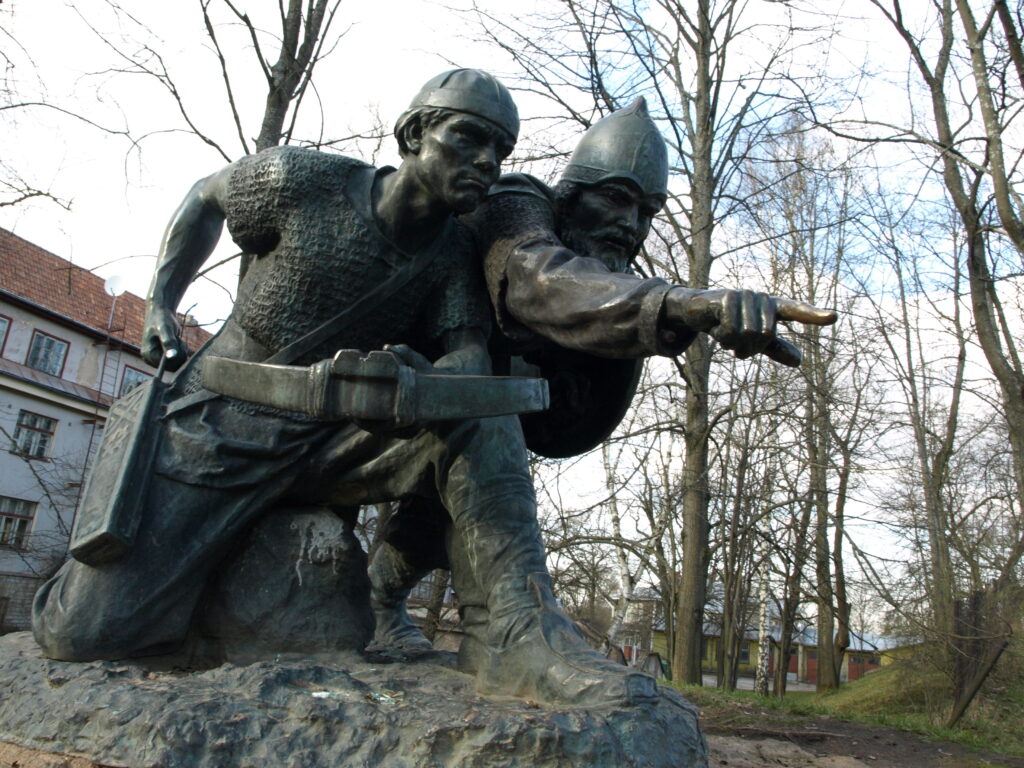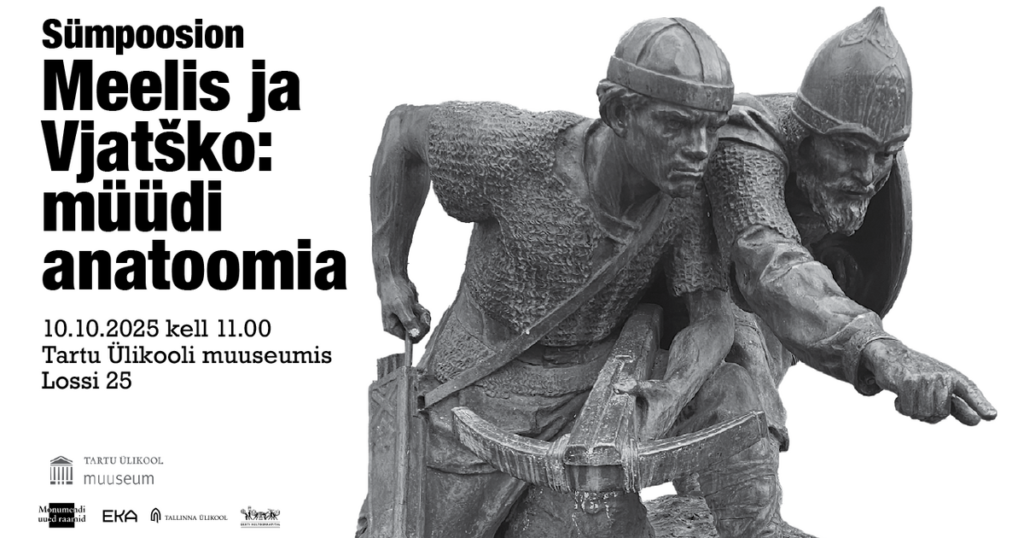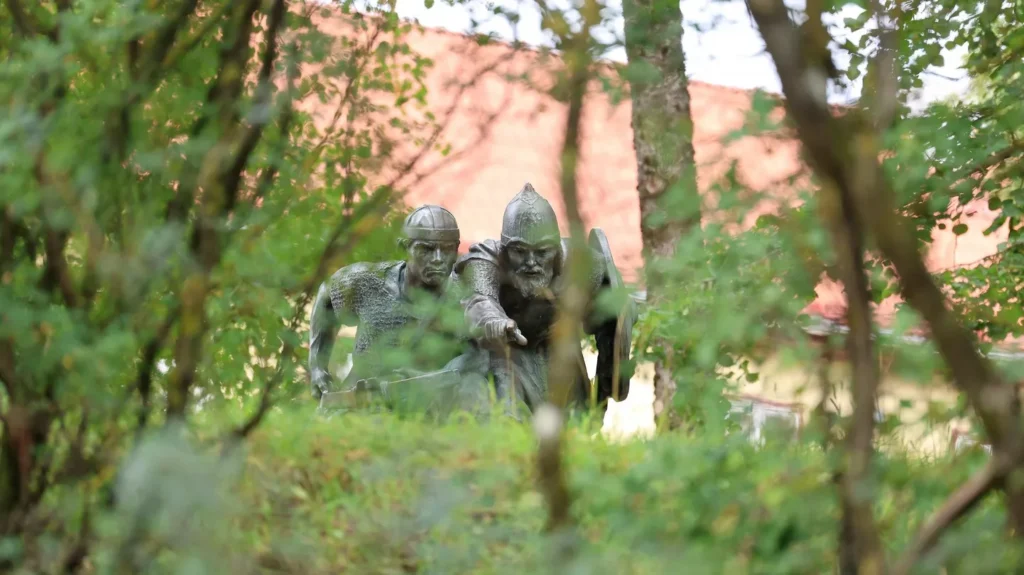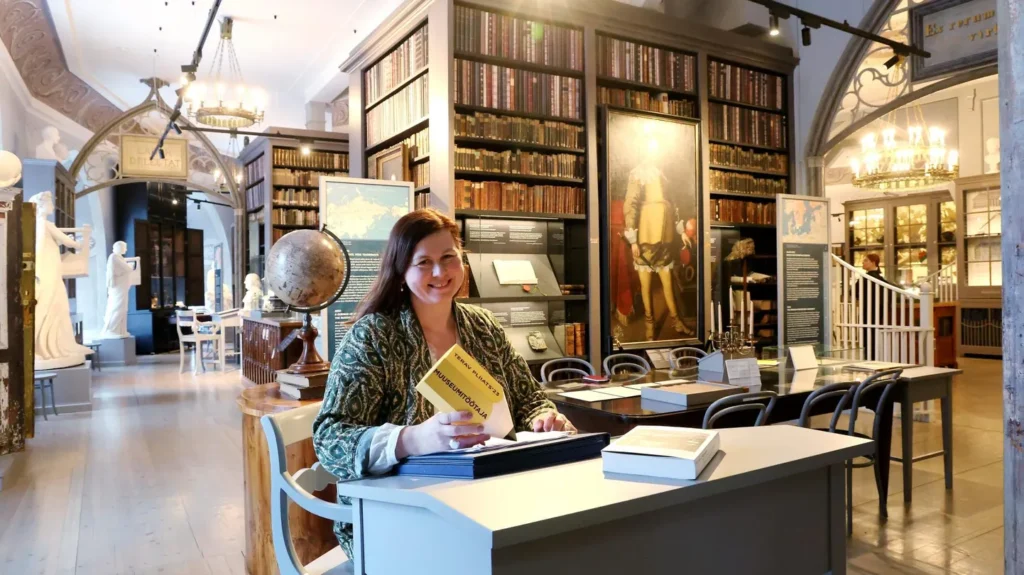
A research project by the Estonian Academy of Arts and Tallinn University explores how to deal with complex heritage while creating new qualities in public space and preserving the important role of controversial heritage as a carrier of history. One of the case studies of the project is the sculpture “Vyachko and Meelis defending Tartu”.
Sculpture “Vyachko and Meelis defending Tartu” (full title “Prince Vyachko of Polotsk and Meelis, son of Lembit, defending Tartu in 1224. “) is a memorial to the characters of the story “Meelis” by the writer Enn Kippel (1901-1942). Meelis, the son of Lembitu, the elder of Sakala, and Vyachko, the former prince of Koknes, who, according to the story, were killed in a battle with the Germans in Tartu in 1224. Kippel’s book tells the story of the fight between Meelis and the Russian prince Vyachko against the German crusaders, and was widely used in the Soviet era as an example of Estonian-Russian historical friendship.[1] Although the plaster sculpture itself was completed in 1950 and cast in bronze in 1964, it was not until 1980, 950 years after Yaroslav The Wise’s conquest of Tartu in 1030, that it was placed in Tartu’s urban space as a monument to the first mentioning of Tartu.
Removing the sculpture from the slope of Oru Street was considered as early as 1990, when the Tartu City Council proposed to the Tartu Art Museum that it be moved to a more suitable location. At the time, however, it remained in its place, contrasting both visually and in terms of its somewhat childish urban placement with the political war monuments that were removed. In August 2024, Elmut Paavel, a former member of the Tartu City Council, launched a public debate on whether it was right to display a monument to the friendship between Estonia and Russia in the public space of Tartu[2], and Mariann Raisma, Director of the University of Tartu Museum, disagreed, arguing that Meelis and Vyachko had become a ‘nonument’, a work whose topicality and/or symbolic value had changed or disappeared due to political or social change. Since nonuments do not have the turbulent consequences of ideological monuments, it would be much better to make this work an example of how to translate, -reread and make sense of an ideologically charged public work of art, rather than just simply removing it from public space.
News and stories connected to this object:





